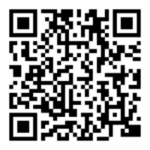When you need some cash badly, taking out an advance on your credit card seems like a simple solution. With just a few quick steps, you can have a large amount of cash directly in hand, alleviate some financial stress, and worry about paying it back later.
But like many things in life, what seems too good to be true likely is. Taking out a credit card cash advance comes with many fees, potential penalties and lots of fine print, making it a very expensive way to solve a cash flow problem.
Here’s what you need to know about taking out a credit card cash advance.
What it is:
Credit card companies allow customers to take out money by borrowing against their line of credit. The amount available to you as an advance usually rings in around 20 percent to 50 percent of your credit limit. (So if you have a $10,000 limit with a 20 percent cash advance, you could access $2,000.)
The cash advance shows up on your credit card statement like a normal purchase.
How it works:
There are several ways to access your credit card cash advance.
- If you have your credit card pin number, you can get cash quickly at an ATM.
- You can contact your credit card company and have them issue what’s known as a convenience check, which you can write out to yourself or to someone else.
- With a major credit card like a Visa or Mastercard, you can also go into any major bank and collect your cash advance on the spot.
What to know:
This quick fix is going to come with some hefty fees, as the costs and interest on a cash advance are high. You’ll be subjected to an initial withdrawal fee, which is usually between 3-5 percent of the total advance amount. Also, the APR — the annual percentage rate, or interest rate — is going to be significantly higher than on a typical purchase. Most credit cards will charge a 25 percent APR on a cash advance— nearly double the rate for purchases.
While most credit card purchases are allowed a grace period before payments are due and interest starts to accrue, there’s no grace period when it comes to a cash advance. This high interest rate starts to accrue immediately — as does the stress over paying it back.
Taking out a cash advance doesn’t directly impact your credit score, but if you’re pushing your credit utilization ratio too high, that’s when you’ll see a downturn. Your credit utilization ratio is the relationship between your current debt and your available credit limit. If you’re consistently maxing out cards or your debt is always hovering near your credit limit, your credit score will take a hit, as it signals to lenders that you’re a risky borrower — which would come back to hurt you when it comes to getting a new credit card, auto loan or mortgage.
Finally, keep in mind that while credit card companies are typically consumer-friendly when it comes to unauthorized transactions or fraud, if your cash advance is lost or stolen, you won’t get it back.
Exploring other options:
Knowing that the terms and conditions of a cash advance aren’t exactly favorable, if you’re in a pinch, consider scouting out another short-term cash solution. Borrowing money from friends or family can be an awkward ask, but it’s a safer option for your financial health. Secure a personal loan, which has a far lower interest rate than a credit card cash advance. There’s also a new wave of cash advance apps, which allow you to access a portion of your next paycheck before it’s technically payday. You could even overdraw your checking account via your debit card. You’ll go in the negative and face fees, but you’ll avoid any interest, making it a more affordable way to get cash quickly.
In short, explore a range of other options before dipping into a credit card cash advance and you’ll be in a far better financial position down the line.




